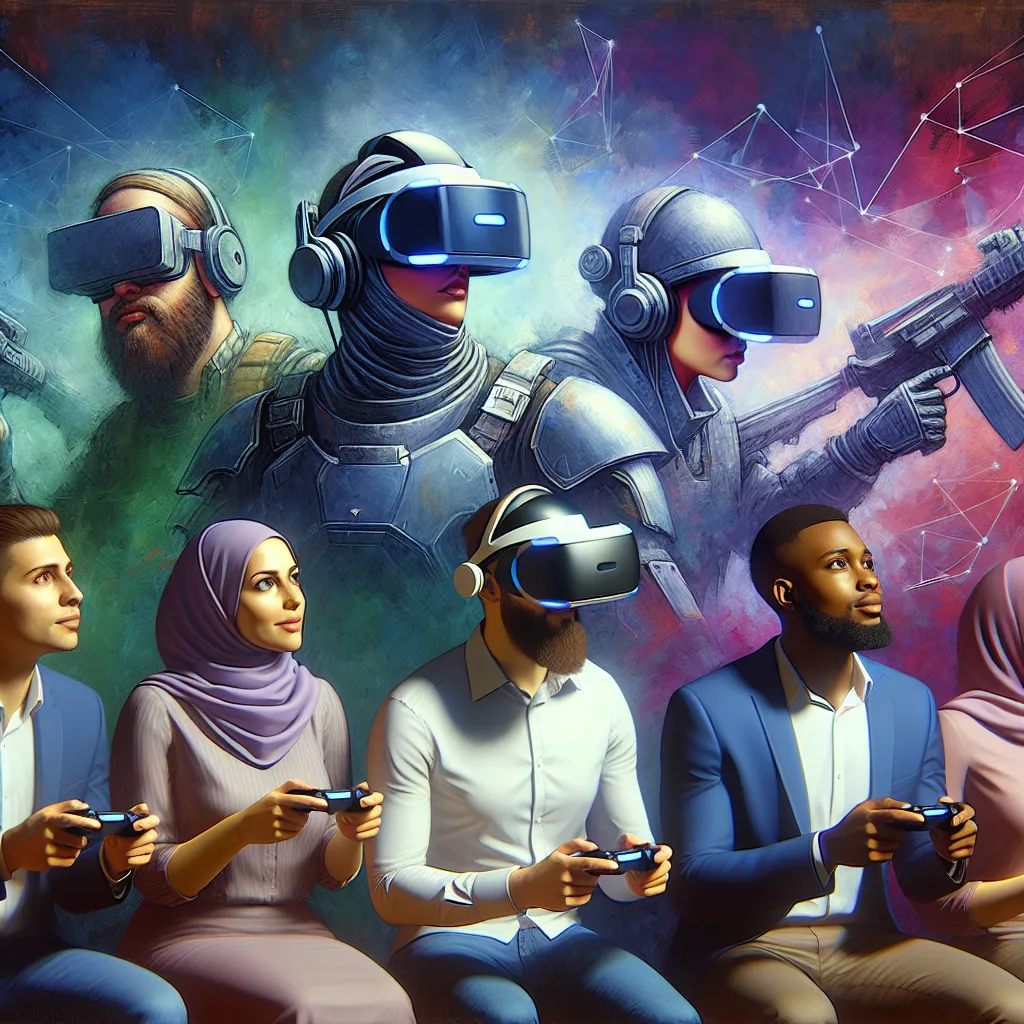The article "From Pixels to Realism: The Visual Evolution of Video Game Graphics" takes readers on a journey through the history of video game graphics, highlighting the incredible advancements from blocky pixels to ultra-realistic 3D graphics. It emphasizes how technology has played a pivotal role in this transformation by introducing 3D graphics, high-definition visuals, and real-time ray tracing. The article also touches on the exciting future prospects, where hardware and software advancements are expected to bring even more lifelike visuals, seamless animations, and immersive gaming experiences. Moreover, it acknowledges the significant impact of technological advancements, such as improved processing power, specialized GPUs, and real-time rendering engines, in shaping the evolution of video game graphics, making it a must-read for gaming enthusiasts and technology aficionados alike.
The article delves into the psychological impact of video games on behavior, presenting a balanced view of the positive and negative effects. It highlights how excessive use of violent video games can lead to desensitization to real-life violence and aggressive behavior, while also acknowledging the potential for certain games to enhance cognitive functions and promote teamwork. Furthermore, the role of video games in shaping cultural norms is emphasized, with a focus on their power to challenge existing norms, reflect prevalent cultural values, and contribute to promoting tolerance and empathy. Lastly, the article discusses the influence of video games on social interaction, particularly through online multiplayer platforms, showcasing how they have revolutionized human connection. By covering these varied aspects, the article encourages readers to explore the multifaceted impact of video games on behavior, culture, and social interaction in contemporary society.
The article "The Relationship Between Video Games and Memory" highlights the extensive research conducted on the impact of video games on cognitive skills, particularly memory. It explores the positive effects of strategy and action-oriented video games, which have been linked to improvements in working memory, visual and spatial memory, as well as multitasking abilities. The article emphasizes the need for balanced gaming, as excessive play may have detrimental effects. Meanwhile, "Improving Decision-Making Through Video Games" discusses how certain types of video games, such as action-based and strategy-based games, can enhance decision-making abilities through fast-paced decision-making processes and exposure to strategic thinking. It emphasizes the value of experiencing the consequences of decisions in a controlled gaming environment to develop effective decision-making skills applicable to real-life scenarios.Overall, these articles offer insight into the potential benefits of video games in improving cognitive functions, but also emphasize the need for further research into their long-term effects.
The history of video game graphics is a captivating journey marked by the continuous evolution of technology and artistic innovation. From the early days of simple 2D graphics in games like "Pong" and "Space Invaders" to the groundbreaking transition to the 3D revolution in the mid-1990s, the progression of video game graphics has been nothing short of remarkable. As technology advanced, the 16-bit era brought about significant improvements in graphics, and the present day has witnessed unprecedented levels of realism and detail, blurring the line between fantasy and reality. Simultaneously, advancements in video game visuals, such as the shift from 2D to 3D graphics, the use of advanced rendering techniques and technologies, and the development of more powerful hardware, have ushered in a new era of immersive and visually stunning gaming experiences. The article paints a vivid picture of the historical and technological advancements that have shaped the mesmerizing world of video game graphics, making it a must-read for anyone curious about the captivating evolution of gaming visuals.
The article presents a comprehensive journey through the evolution of video games, starting from the iconic classics like Pong and Pac-Man, which revolutionized the concept of electronic gaming. It highlights the remarkable transformation from the pixelated 2D graphics of the early days to the immersive and visually stunning 3D worlds that have captivated players with lifelike environments and enhanced visual effects. Moreover, it discusses the advent of online gaming, emphasizing its revolutionary impact on connecting players worldwide and creating interconnected virtual realities. The article not only encapsulates the historical significance of these developments but also hints at the exciting future prospects of 3D graphics and virtual reality technology, promising further redefinition of the gaming landscape and offering new opportunities for players to explore and interact with virtual realms. For readers interested in understanding the pivotal moments and advancements in the gaming industry, this article provides a compelling and insightful journey that is worth exploring in its entirety.





